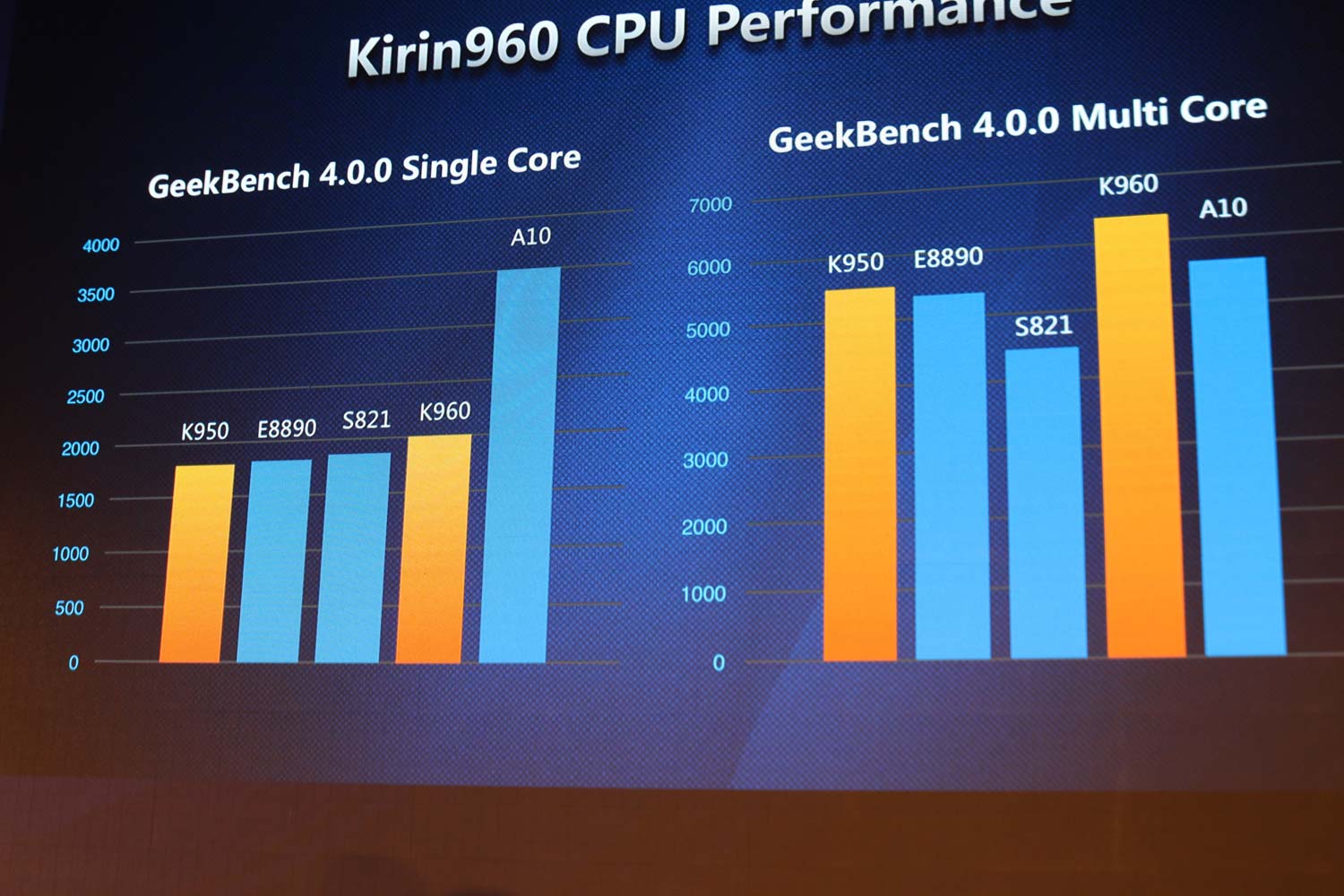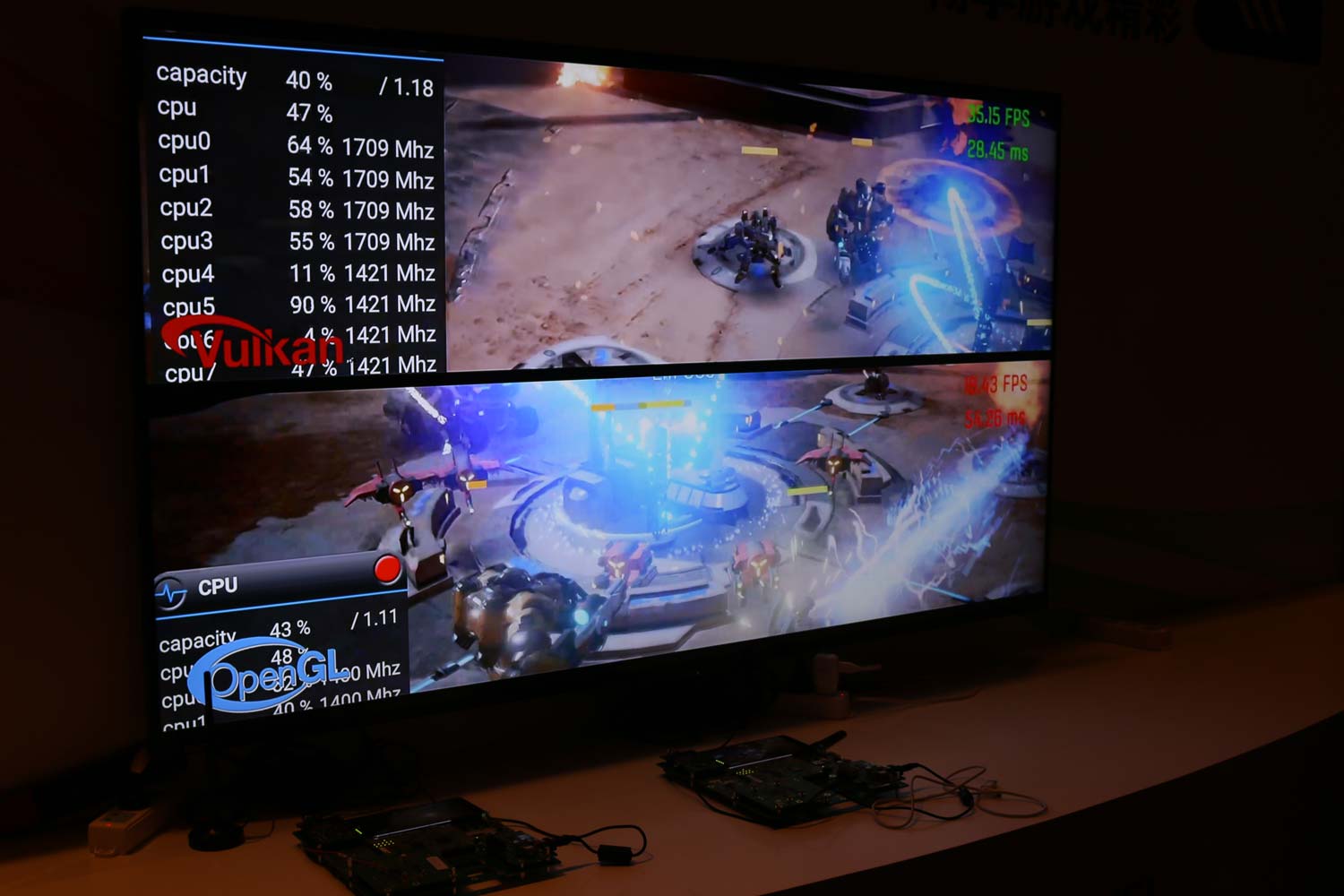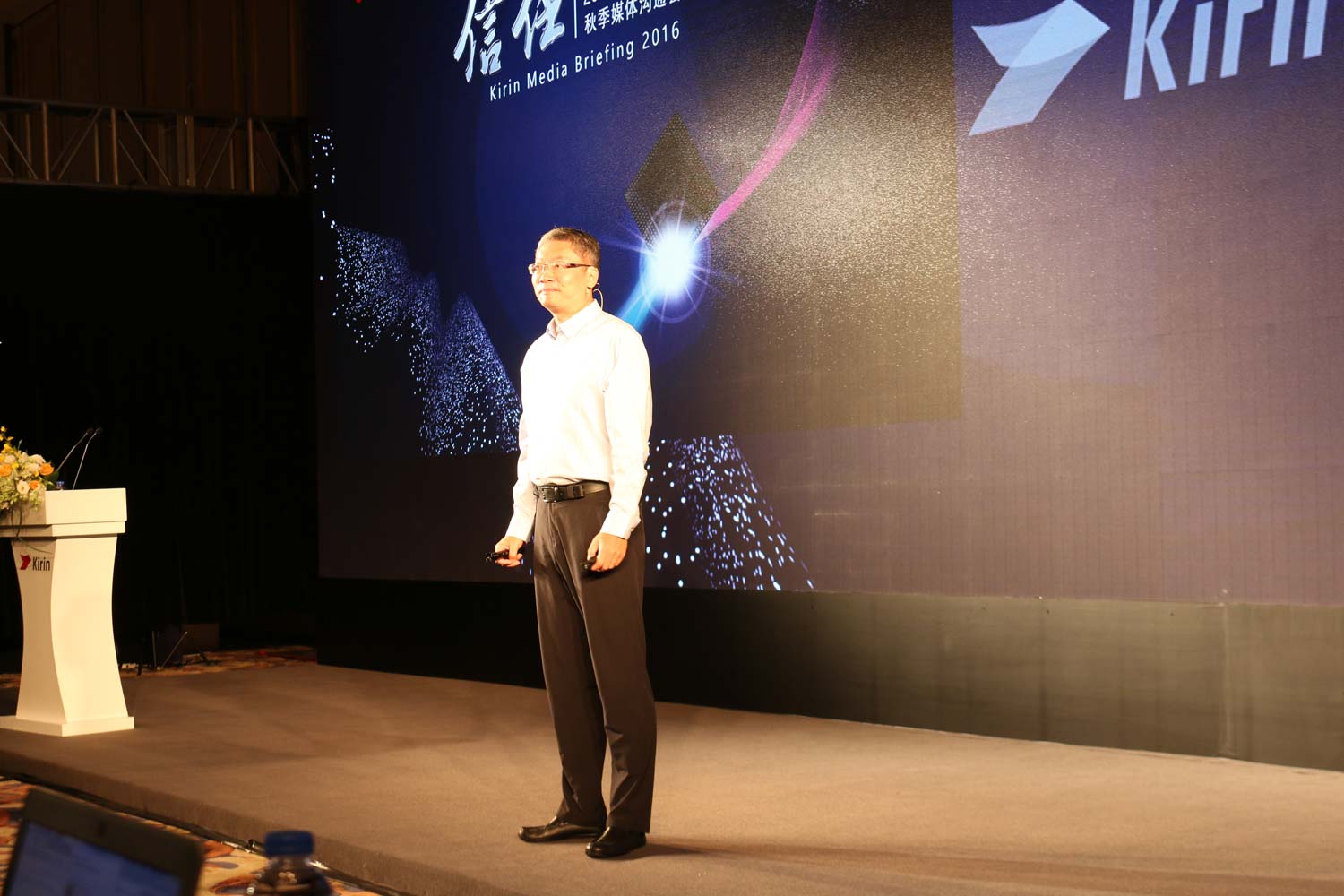Huawei's Blazing New Chip Beats the iPhone 7
Huawei's Kirin 960 CPU surpasses the iPhone 7's A10 chip in some tests, including Geekbench multi-core and opening lots of apps.
SHANGHAI — The iPhone 7's A10 Fusion chip may rule the roost when it comes to mobile processing performance, but Huawei is betting that it has a formidable rival in the form of its new Kirin 960 CPU.

Huawei took the wraps off its new chips at a press event in Shanghai today (Oct. 19), and while the company didn't announce which devices will run on the Kirin 960, it seems likely that phones with those CPUs will hit the U.S. at some point. Chips from the 960's predecessor, the Kirin 950 series, powered this year's Huawei P9 and Honor 8 phones from the Chinese phone maker, for example.
The Kirin 960 SoC features eight cores — four for ARM's Cortex-A73 processor and four for the Cortex A-53. The 960 will be the first chipset to feature the Mali G-71 graphics CPU unveiled by ARM earlier this year when it announced the A73.
MORE: 12 Best Android Apps You're Not Using
When the Kirin 960 arrives on a future Huawei device, you can expect to see it hold its own against the A10 Fusion-powered iPhone 7, said Ai Wei, a Huawei fellow for chipsets and hardware technology strategy. In the Geekbench 4.0 test of general performance, the iPhone's A10 Fusion processor dominated the field in single core performance. But in multi-core tests, the Kirin 960 vaulted ahead of the A10, Wei says.

Benchmark tests are one thing, but Huawei thinks its new chipset will also improve the daily experience of using your smartphone. The company set up an iPhone 7 Plus, Galaxy Note 7 and Kirin 960-powered mystery device with 14 of the most popular apps here in China. The Kirin device launched 13 of those apps faster than the other phones, with the iPhone 7 Plus coming in first in just a single category.
I saw similar results in a demo area comparing a Kirin 960-powered device to a Samsung S7 Edge running on a Snapdragon 820 processor. (Why the switch to an S7 Edge? You won't find the since-recalled Note 7 being used in too many live demos these days.) Huawei set up a demo where both phones would simultaneously launch a spate of apps; the Kirin-powered phone quickly jumped out in front of the S7 Edge, eventually leaving Samsung's device in the dust.
That said, Huawei is promising a modest 10 percent improvement on single-core performance over the 950 with its latest chipset. Multicore performance should increase by 18 percent with the Kirin 960.
It's graphics where the Kirin 960 figures to see its biggest gains relative to its predecessor — up to 180 percent, Huawei says. Much of that improvement should come from the eight-core Mali G-71 GPU featured in the Kirin 960.
Huawei's new chip also supports the Vulkan graphics standard, which boasts improved multithreading and rendering. To demonstrate, Wei showed a split-screen video of a shooter game using the OpenGL and Vulkan standards. Action looked smoother on the Vulkan-powered game with laser blasts and explosions happening without any hesitation. The Vulkan version of the game also managed to double the frames-per-second of its OpenGL counterpart.
MORE: The 20 Best Android Games for Smartphones and Tablets
Get instant access to breaking news, the hottest reviews, great deals and helpful tips.
It will be interesting to see how that translates to real-world use once the Kirin 960 finds its way into a phone, as my experience with Kirin 950-powered devices found that they tended to lag behind comparable phones when it came to graphically intense apps.
The improved GPU and Vulkan support also would make Kirin 960-powered devices compatible with Google's Daydream virtual reality platform, assuming the other phone specs such as the display were up to Google's standards.
While the Kirin 960 should outperform its predecessor, Huawei's Wei says those gains won't come at the expense of battery life. An i6 coprocessor manages functions on the Kirin 960 when the main CPUs are asleep, handling tasks like counting steps and always-on displays. The result should be less power consumption as you go about your daily business with a Kirin 960-powered phone.

Wei also touted the Kirin 960's ability to handle dual cameras — not that surprising since the last Huawei devices to make it stateside have featured dual lenses on their back. Among the camera capabilities supported by the Kirin 960 will be real-time fusion processing of images shot by dual color and monochrome cameras — the dual lens setup that both the P9 and Honor 8 used.
This iteration promises better noise suppression in low light settings for sharper images and a longer shooting distance for bokeh effects, where an object in the foreground is kept in sharp focus while background details are given a stylish blur. The iPhone 7 Plus promises that effect, but Huawei believes phones with the Kirin 960 will perform that trick better in low light.
MORE: 21 Awesome iPhone 7 Photos Prove How Good the Camera Is
One especially intriguing addition to the Kirn 960 chipset is a promised improvement to a device's audio, whether it's listening to music or placing a phone call. The Kirin 960 uses the Hi6403 audio chip, which counts among its features active noise cancellation technology to cut down on the background noise when you have to take a phone call in a noisy setting. That's an oft-overlooked part of the smartphone experience — that mini-computer in your hand is still a phone, after all — so it will be interesting to see if those clearer calls emerge once the 960 is inside a phone.
Unfortunately, it could be a bit before we see just what impact the Kirin 960's features have on phone performance. Huawei officials were mum about when we could expect a device featuring the new chipset or when a Kirin 960-powered phone might land in the U.S. Given what we saw with the iPhone 7's performance after its September release, we're looking forward to seeing if any smartphone can up its performance game.
Philip Michaels is a Managing Editor at Tom's Guide. He's been covering personal technology since 1999 and was in the building when Steve Jobs showed off the iPhone for the first time. He's been evaluating smartphones since that first iPhone debuted in 2007, and he's been following phone carriers and smartphone plans since 2015. He has strong opinions about Apple, the Oakland Athletics, old movies and proper butchery techniques. Follow him at @PhilipMichaels.

